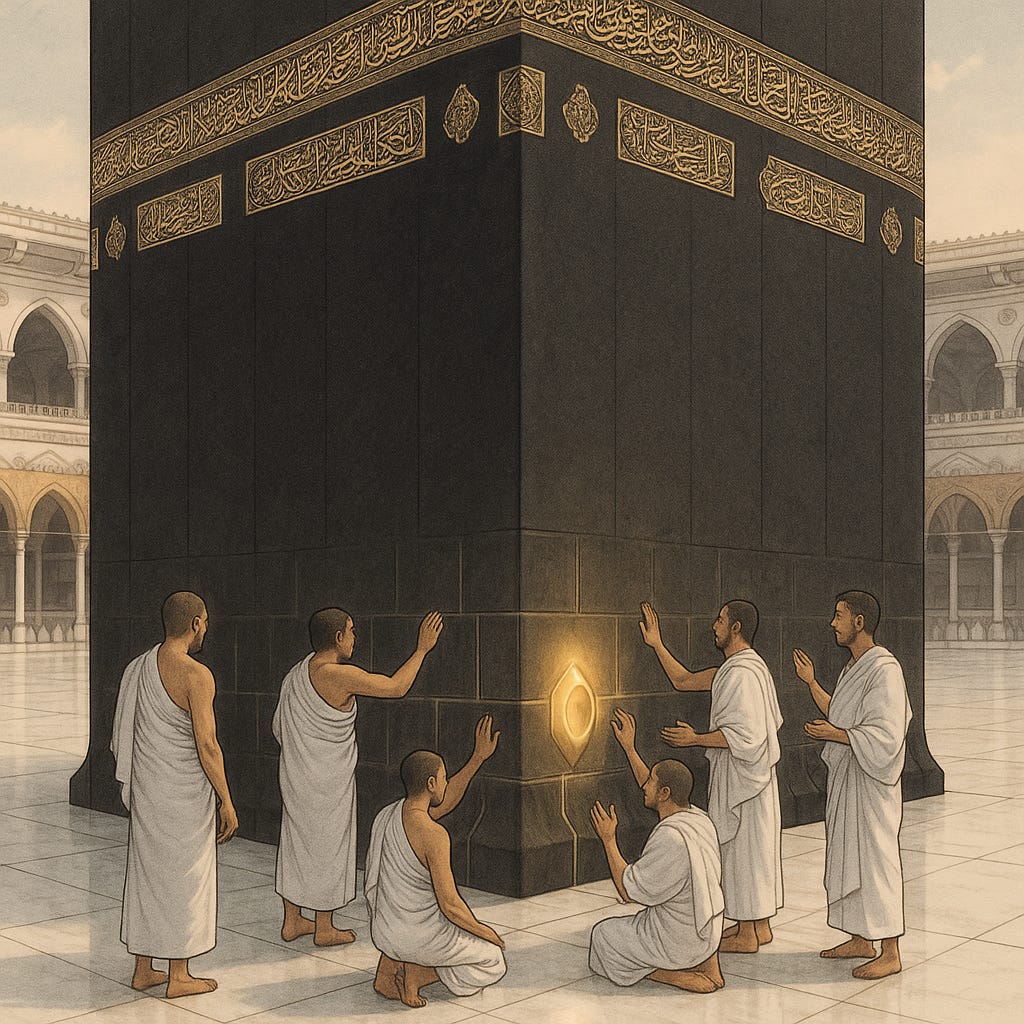The Spiritual Significance of Rukn Yamani
Exploring the Miraculous Corner of the Holy Kaaba
The Kaaba, the holiest sanctuary in Islam, is revered not only for its central role in worship but also for the unique significance of its four corners. Among these, the Rukn Yamani—also known as the Yamani Corner or Rukn al-Janubi—holds a special place in the hearts of believers. This article delves into the spiritual and historical importance of Rukn Yamani, drawing upon the Quran and Islamic tradition to illuminate its virtues.
Location and Naming of Rukn Yamani
Rukn Yamani is situated at the south-western corner of the Kaaba, directly opposite the Hajr-e-Aswad (Black Stone) on the southern wall. Its name, "Yamani," is derived from its orientation towards Yemen. The Kaaba’s four corners each point to a significant region, and the Yamani Corner’s direction is symbolic of the land of Yemen, a region historically associated with faith and steadfastness.
A Living Miracle
Rukn Yamani is often described as a "living miracle" in Islamic tradition. Despite repeated attempts by various rulers to repair or seal a rupture in this corner, all efforts have failed. Even with the use of molten metal, concrete, and steel nails, the rupture remains, signifying a divine sign that has persisted through centuries. This enduring feature is a testament to the Kaaba’s sanctity and the mysteries known only to Allah.
The Sunnah of Istilam at Rukn Yamani
Istilam refers to the act of touching or gesturing towards the corner of the Kaaba. The Prophet Muhammad (peace be upon him) is reported to have touched the Rukn Yamani with his hand during Tawaf, making this act a Sunnah. It is recommended to touch the Rukn Yamani if possible, but if the crowd prevents it, gesturing towards it suffices.
The Supplication Between Rukn Yamani and Hajr-e-Aswad
As pilgrims walk between the Rukn Yamani and the Hajr-e-Aswad, it is Sunnah to recite the following supplication, as practiced by the Prophet (peace be upon him):
“O our Lord! Grant us good in this world and good in the Hereafter, and save us from the punishment of the Fire.”
(Quran, Surah al-Baqarah, Chapter 2, The Cow, Verse 201)
This supplication is a reminder of the comprehensive mercy sought from Allah during the sacred rites.
The Virtue of Touching the Yamani Corner
The Prophet Muhammad (peace be upon him) is reported to have said:
“Touching the Black Stone and the Yamani Corner erases sins.”
This emphasises the spiritual purification associated with these acts during Tawaf.
The Other Corners of the Kaaba
Each corner of the Kaaba has its own significance:
Rukn Iraqi: Points towards Iraq, symbolising the land of historical importance.
Rukn Shami: Faces the Levant (Syria), a region of early Islamic history.
Rukn al-Aswad: The corner housing the Hajr-e-Aswad (Black Stone), facing southeast.
Conclusion
Rukn Yamani stands as a living miracle and a focal point of spiritual connection for pilgrims. Its unique history, the Sunnah of Istilam, and the special supplications recited between it and the Hajr-e-Aswad are deeply rooted in Islamic tradition. The Yamani Corner is not just a physical landmark but a symbol of enduring faith, divine mystery, and the continuous blessings of Allah upon the House of God.


